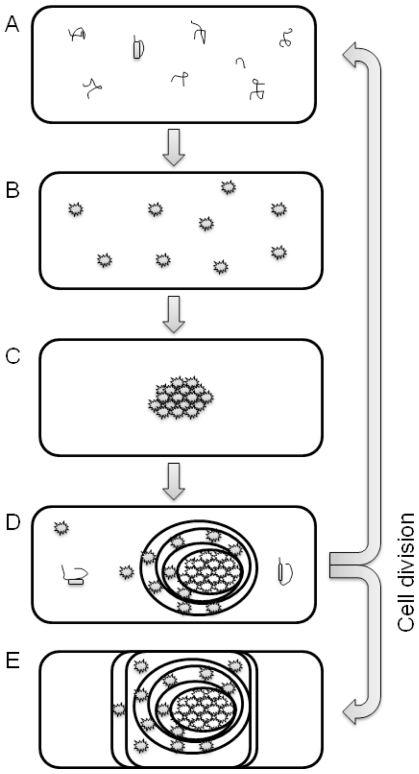Figure 1.
Formation of inclusion bodies (IBs). Since bacterial cytoplasm is not compartmentalized, proteins start to form on multiple locations. During o over-expression of foreign genes, the cell repair mechanisms are overloaded thus various transitional folding states of the recombinant protein are simultaneously present in the cell. Due to various reasons (hydrophobicity, exceeded solubility, cross-molecular stereospecific interactions) these protein precursors start t to aggregate into small “proto-aggregates” t that are then glued together into (usually) a single IB. This IB grows in the cell as a sphere u until it reaches the bacterial cell wall and it is t then prolonged into a cylinder. When the cell divides, the IBs stay in one of the cells and grow further, while the other cell remains e empty and protein production and IB formation begins de novo. Studies show that the process of IB translocation to the cell pole before cell division is an energy dependent p process [37].

